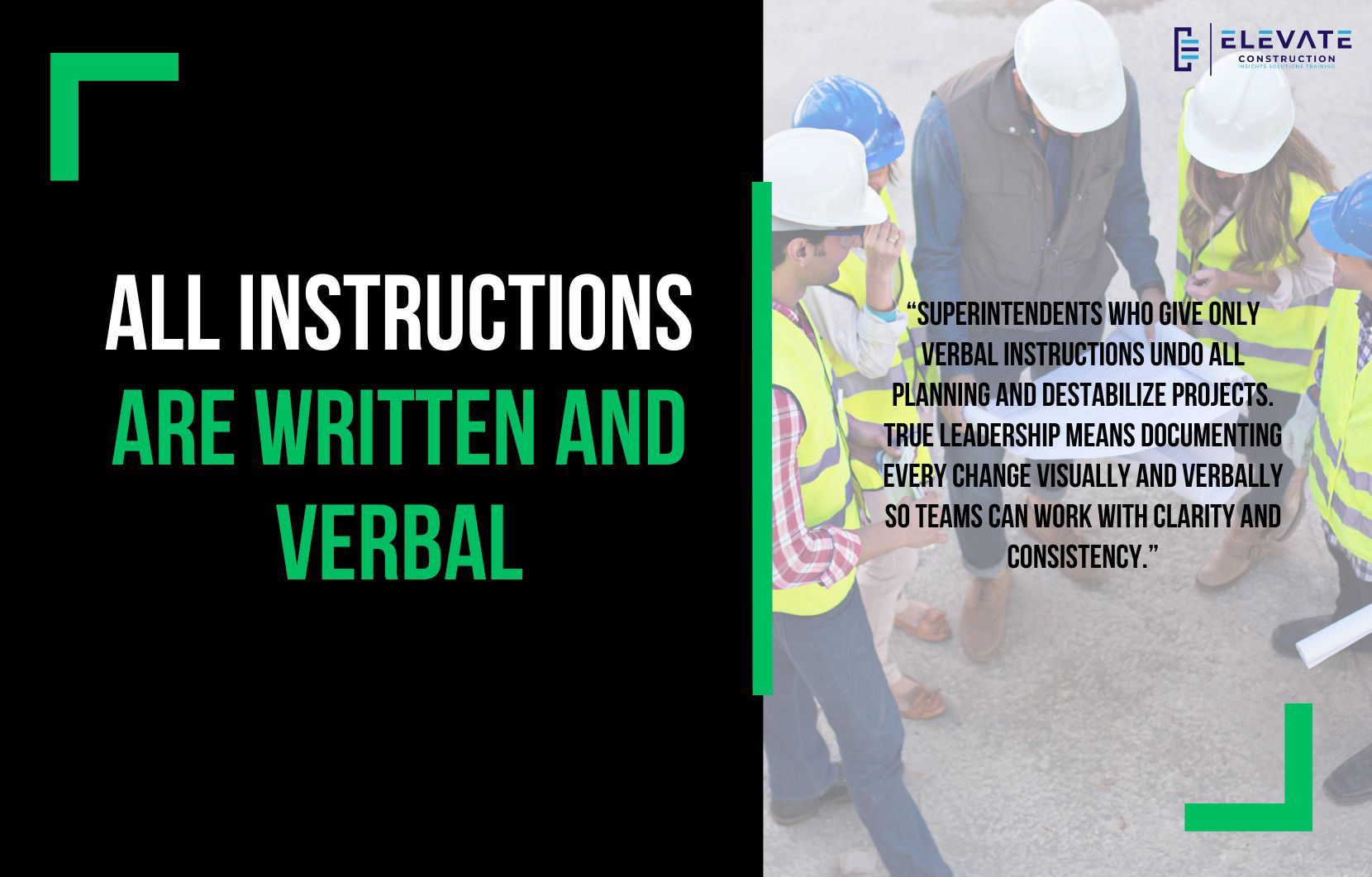Why Superintendents Must Lead with Visual Communication
One of the most important reminders for superintendents is this simple truth: if you want to change something on your project, it must be written down and clearly communicated both visually and verbally. Anything less is reckless and destructive.
I have seen projects of every type and size. Hospitals, laboratories, airports, bridges, custom homes, data centers, the list goes on. With every project, one principle remains constant: when superintendents make changes verbally without updating plans, schedules, and visuals, they undo all the progress the team has worked to create.
Imagine you have spent weeks pulling together a production plan, coordinating with trades, setting up lookaheads, and aligning the master schedule. Now imagine that one superintendent walks the site and casually gives verbal directions without documenting the changes. At that moment, every second of planning that went into the project was neutralized. The master schedule is meaningless. The last planner system is discarded. The supply chain is left disconnected. The field team is now running blind.
That is how quickly verbal-only direction dismantles a jobsite.
The military figured this out long ago. General Patton required that all orders be written and then followed by verbal explanation. Written orders alone can be misinterpreted. Verbal orders alone can be forgotten or reshaped into something they were never meant to be. Together, they create clarity and accountability. The same standard must apply to construction leadership.
A superintendent who does not think and communicate through visuals is a liability. If you want something to change, you must update the production plan, ensure it is reflected in the schedule, share it visually, and follow up with verbal direction. This discipline is not optional.
The dangers of skipping this process are enormous. When superintendents run jobs from their heads, they create silos. They default back to command-and-control leadership. They destroy consistency and reporting. They eliminate key performance indicators. They cut off the project managers and engineers who depend on updated plans to coordinate supply chains and resources. Most damaging of all, they introduce massive variation into the project, making outcomes unpredictable and trust impossible.
I used to frame this issue as “getting everything out of a superintendent’s head.” Today, I say it more plainly. A superintendent who does not communicate visually and in writing does not understand the true role of the position. That person is not only failing to do the job, but is actively undermining the systems that protect the team, the client, and the project.
Why does this still happen? In most cases, it comes down to one of three causes: habits, laziness, or the desire for significance.
Some superintendents have simply fallen into bad habits over years of experience. They are used to issuing verbal commands and have never been trained to operate differently. Others are lazy, choosing the path of least resistance rather than taking time to properly update plans.
But the most concerning reason is significance. Some superintendents intentionally hoard information because it makes them feel indispensable. If the plan lives in their head, everyone has to come to them for answers. They become the gatekeeper, the hero, the one person the project cannot function without. This may give them a sense of power, but it holds the entire jobsite hostage. It is a method of job security born out of incompetence, and it is unacceptable.
Superintendents are not meant to be heroes or bottlenecks. They are meant to be leaders who create clarity and consistency so that the entire team can thrive. When you insist that all changes be documented visually and verbally, you are not just protecting the flow of the project, you are protecting the trust, safety, and productivity of everyone involved.
Every system we build to elevate construction depends on this discipline. The master schedule, the weekly work plan, the day plan, the reporting systems, the supply chain connections, all of it collapses without consistent written and visual communication.
The role of a superintendent is too important to be reduced to memory and ego. The projects we build are too complex and too valuable to rely on verbal commands. It is time for us to raise the standard across the industry.
If you are a superintendent, commit today to this simple rule: all changes go into the plan first. They must be written, visual, and shared with the team before they are spoken. This is how you protect your project. This is how you lead with integrity. This is how you elevate construction.
Key Takeaway
Superintendents who give only verbal instructions undo all planning and destabilize projects. True leadership means documenting every change visually and verbally so teams can work with clarity and consistency.
If you want to learn more we have:
-Takt Virtual Training: (Click here)
-Check out our YouTube channel for more info: (Click here)
-Listen to the Elevate Construction podcast: (Click here)
-Check out our training programs and certifications: (Click here)
-The Takt Book: (Click here)
Discover Jason’s Expertise:
Meet Jason Schroeder, the driving force behind Elevate Construction IST. As the company’s owner and principal consultant, he’s dedicated to taking construction to new heights. With a wealth of industry experience, he’s crafted the Field Engineer Boot Camp and Superintendent Boot Camp – intensive training programs engineered to cultivate top-tier leaders capable of steering their teams towards success. Jason’s vision? To expand his training initiatives across the nation, empowering construction firms to soar to unprecedented levels of excellence.
On we go

